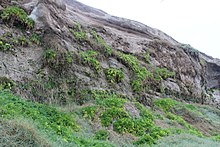| Apium australe | |
|---|---|
 | |
| Scientific classification | |
| Kingdom: | Plantae |
| Clade: | Tracheophytes |
| Clade: | Angiosperms |
| Clade: | Eudicots |
| Clade: | Asterids |
| Order: | Apiales |
| Family: | Apiaceae |
| Genus: | Apium |
| Species: | A. australe |
| Binomial name | |
| Apium australe | |
Apium australe is a species of the genus Apium of the family Apiaceae. It is a perennial herb [2] with a distribution in salt-marsh and saline habitats of Southern South America. [3]